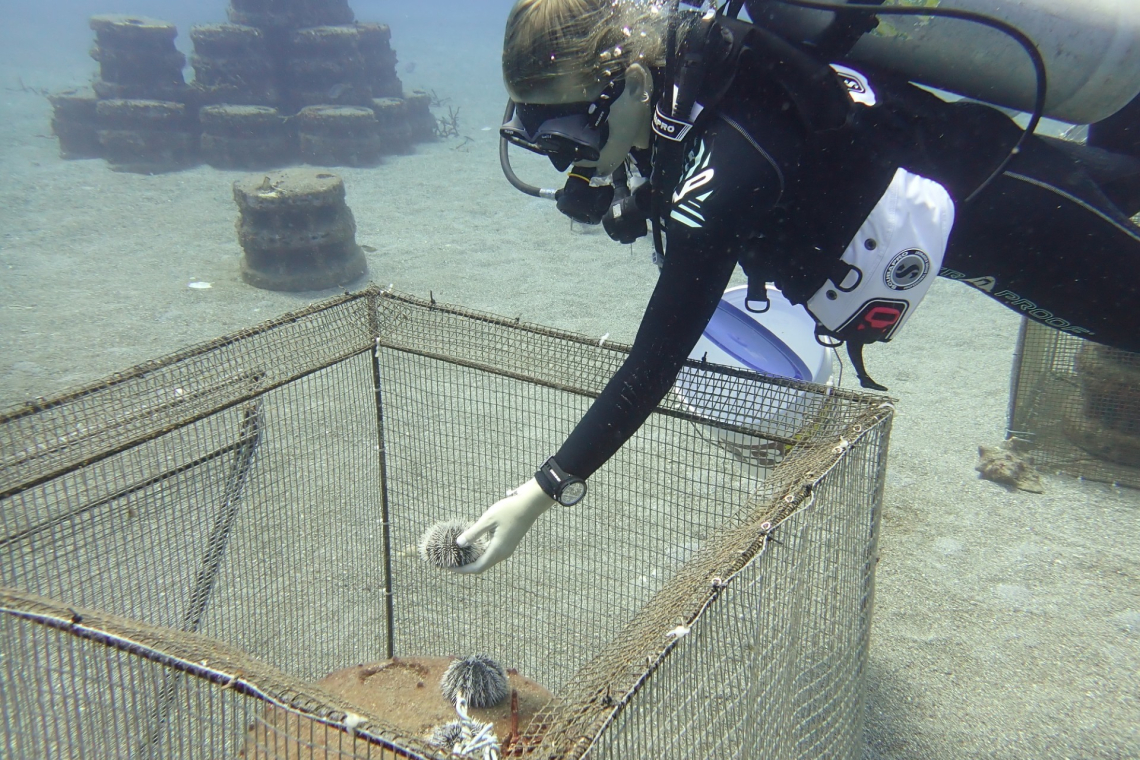Researcher introducing West Indian sea egg on an artificial reef. The reef is caged to measure the effect of the grazer on the algae.
SABA--Saba has an exciting new initiative to restore its coral reefs. This new project, running from 2024 to 2026, will focus on reviving key species in the island’s underwater ecosystems.
With a collaborative team from Saba Conservation Foundation (SCF) and Van Hall Larenstein (VHL) University of Applied Sciences, the project aims to restore both corals and sea urchins.
This initiative is centred around coral restoration, specifically reviving two essential coral species – staghorn coral (Acropora cervicornis) and elkhorn coral (Acropora palmata). By mapping parent colonies and using a technique known as coral gardening, SCF will create and maintain coral nurseries. These corals will eventually be out-planted at key reef sites around Saba to not only expand the number of coral colonies, but also provide essential fish habitat. The project focusses on installing coral nurseries, training staff with the newest techniques and starting with the restoration of key reef sites.
It is not just corals getting a makeover – this project also shines a spotlight on the essential role of grazers, particularly sea urchins. VHL is leading the charge on cultivating and restocking two key sea urchin species – West Indian sea egg (Tripneustes) and long-spined sea urchin (Diadema) – known for their ability to keep algae in check. By removing algae, which are important competitors of corals, they help the coral to thrive. By restoring these “reef cleaners”, Saba’s project will give corals the breathing room they need to grow, setting the stage for a healthier, more balanced marine ecosystem.
The project will be funded as part of the Dutch government’s Nature and Environment Policy Plan (NEPP) 2020-2030 for the Caribbean Netherlands, a comprehensive initiative aimed at conserving and restoring the unique natural environments of the Dutch Caribbean islands, including Saba, St. Eustatius and Bonaire. This project is aiming for big milestones: building and maintaining coral nurseries, the expansion of urchin cultivation facilities, and the creation of a dedicated research centre.
The project hopes to ramp up coral and grazer restoration by 2026, with the ultimate goal of extending these efforts across the Dutch Caribbean. By linking local initiatives to broader regional goals, Saba’s restoration project promises to have a lasting impact on both the environment and the community.
The Dutch Caribbean Nature Alliance (DCNA) supports (science) communication and outreach in the Dutch Caribbean region by making nature-related scientific information more widely available through, amongst others, the Dutch Caribbean Biodiversity Database, DCNA’s news platform BioNews and through the press. This article contains the results from several (scientific) projects, but the projects themselves are not DCNA projects.







